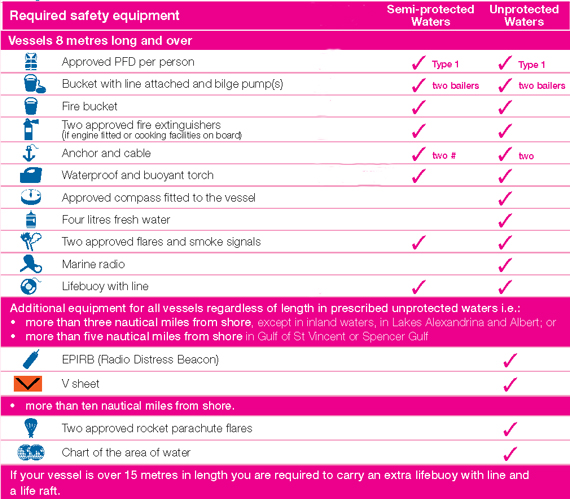

Many of us are dusting off our pride and joy for the sailing season. It’s a good time to check out the safety equipment on board. While racing boats complete a safety checklist each year, safety checks should be carried out by all boats, even if you’re a casual cruiser or day sailor.
If you’re thinking of entering some of our trophy races or planning an occasional Wednesday twilight race, you will need to complete a Category 6 safety form.
For Etchells, there is a modified Category 7 form on this web page.
The table below details the minimum safety requirements (for most RSAYS vessels) operating in Gulf waters. Semi-protected Waters are defined as being within 2 nmi of the coast (including the Port River) while Unprotected Waters extend beyond the 2 nmi limit within the Gulf.
